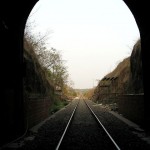 Train rides are very contradictory in nature. Trains rides are almost always comforting, and at the same time they are incessantly long. Trains are funny. For some people, they’re the morning commute, a dreary 30 minute to 1 hour penance flavoured by coffee breath and armpits. For others, they’re Star Trek on wheels, something to obsess over and while away long afternoons with.Some read books, some plug their MP3s and MP4s, and some …doze off!
Train rides are very contradictory in nature. Trains rides are almost always comforting, and at the same time they are incessantly long. Trains are funny. For some people, they’re the morning commute, a dreary 30 minute to 1 hour penance flavoured by coffee breath and armpits. For others, they’re Star Trek on wheels, something to obsess over and while away long afternoons with.Some read books, some plug their MP3s and MP4s, and some …doze off! 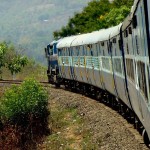
But there are some train journeys that rise above this pluralistic view and make everyone go rail-crazy.
Here is one of my all-time favorites:
The Konkani Odyssey :
Mumbai. My first out-of-home job city. A trip to Goa was due…long due. But I did not want a hurried trip-since I was almost anticipating how beautiful this trip would be and what a whole lot of memories and visions it would leave behind for me. I wanted to stop by where I could, and where I wanted to. Spend a few days and get back on the next train. Eventually I would reach Goa!
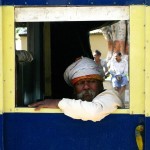 The Konkan is a coastal strip of land bounded by the majestic Sahyadri hills on the east, and Arabian Sea on the west. It is a land where mythology breathes side by side with economic growth, a land with rich mineral resources, dense forest cover and a landscape fringed with paddy, coconut and mango trees.
The Konkan is a coastal strip of land bounded by the majestic Sahyadri hills on the east, and Arabian Sea on the west. It is a land where mythology breathes side by side with economic growth, a land with rich mineral resources, dense forest cover and a landscape fringed with paddy, coconut and mango trees.
Every landscape had a story of its own. Some raged in the pride of its majestic mountains, some romanced the passer-by with whispering streams, but what I was indeed looking forward to the most, was visiting the numerous coastal towns, fishing villages and in the process, discover the little idiosyncrasies that would set them apart from the teeming millions in the big cities I have grown up in..
I hopped on! Everyone else on the 6.55am Mandovi Express from Mumbai had somewhere to go. Some families were headed home to one of the towns along the 570km journey to Goa. I was the only one who was along just for the ride! The Konkan Railway route officially starts at Roha, a small town about 150 kms from Mumbai. I had about two hours to kill, till I knew I would be so drowned in the beauty of the surroundings, that I might even lose myself.
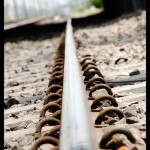 Before that happened, I gave this a thought: This isn’t an overnight train for easy travel, not a hop-into-next-towner, not a long-distance carrier, not even a day-trip vehicle that allows you to reach on time so that you have half a day to explore the destination city. It’s slower than most BEST buses I was used to, and still so popular that the last time I had tried reserving a berth, a fortnight before a potentially viable trip-date, I was pushed to the corner with a unforgiving wait listed No. 299!
Before that happened, I gave this a thought: This isn’t an overnight train for easy travel, not a hop-into-next-towner, not a long-distance carrier, not even a day-trip vehicle that allows you to reach on time so that you have half a day to explore the destination city. It’s slower than most BEST buses I was used to, and still so popular that the last time I had tried reserving a berth, a fortnight before a potentially viable trip-date, I was pushed to the corner with a unforgiving wait listed No. 299!
I saw National Highway 17 snake off to twist and turn around a hill. Abruptly, everything turned dark. The train had plunged into a tunnel. A murmur coursed through the compartment—this was the first of the 91 tunnels on the route. Many a town, many a hamlet, and a lunch passed in between this primer tunnel and the next dozen or so. I was gazing into the twilight soaked water body passing adjacent to my window, almost ready to write poetry!
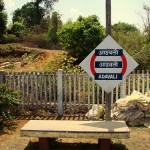 Suddenly, the roar of the engine deepened and the train hurtled into the side of a verdant hill, which magically opened up into a tunnel. The light turned from rain-soaked grey to fluorescent orange-punctured black—and back again to daylight a few seconds later. Suddenly everything became harmoniously married into each other—ponds, streams, submerged fields, all locking eyes flirtatiously, yet theatrically with the rail tracks. It was almost ethereal!
Suddenly, the roar of the engine deepened and the train hurtled into the side of a verdant hill, which magically opened up into a tunnel. The light turned from rain-soaked grey to fluorescent orange-punctured black—and back again to daylight a few seconds later. Suddenly everything became harmoniously married into each other—ponds, streams, submerged fields, all locking eyes flirtatiously, yet theatrically with the rail tracks. It was almost ethereal!
Each station came with its own nature-contributed landscape attached. The ones at Nivsar and Vilawade—situated between two tunnels—overlook enormous drops and vast valleys. Rajapur Road is a narrow strip between two rock faces: If it weren’t for the white boards, you wouldn’t know it was a station. Flowers lined the tracks, making them look like they were on fire, with bougainvillea the reigning queen. 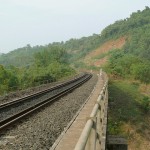
And, always, there was water. There were the small, placid, serene streams that came and went. The rivers—some swift, bright and tumbling, such as the Kundalika, some dusky and still like the Savitri—flowing along the tracks for miles together. And alongside were stubbornly dry brown trees, bare branches on some and auburn leaves on the other, serenading grey rocks interspersing the lush green plants.
The skies darkened further as the train headed towards the languid Zuari river, the 1km-long bridge over it bringing the journey to a gentle end. I didn’t expect a finale, and I didn’t get one either as the Mandovi Express rolled quietly into Madgaon station.
I just kept wondering, and I still wonder:”How could one journey have offered so many different kinds of riches?”
Trip Planner & Best Bytes
- Besides the Mandovi Express (6.55am, Mumbai CST), a number of trains ply on the Mumbai-Goa route by day.
- All trains require prior reservation.
- Trains are scheduled to run slower during the monsoons.
- It is advantageous if you know the local Marathi language as it will help you to befriend the local people who are very helpful by nature
- There are Good Restaurants in the bigger cities but as far as eating out goes, most of the small towns have ‘Khanavals‘ or small basic dining hotels instead of fancy restaurants. By and large, they are clean and you can be assured of a hearty meal at these places.
- It is advisable to drink Mineral or Bottled water which is easily available even at the smallest towns and villages. The local food is very good but some people may find it spicy and hot.
- Don’t forget to include Sol Kadhi before, in or after your meals. Sol Kadhi is a pink colored appetizer drink made from the kokum fruit and coconut milk.
- If the beach is your destination,casual light cotton clothing is advised due to the hot and humid conditions.Many of the beaches on the coast are dangerous for swimming and proper care should be taken while entering the water. Please pay heed to the locals if they warn of dangerous waters.
- The best period to visit Konkan is from November to February.For people who cannot tolerate hot and humid conditions, absolutely-December and January are the best times!
- Write a post-card home. It always matters.

Sambrita Basu is a food-fascinated travel writer and photographer based out of Bangalore India. A background and a degree in hospitality and restaurant management paved her interest in food. As the secretary of the institution’s editorial club, she contributed regularly and wrote about food in their annual magazine, A la Carte.
Sambrita has published interviews of celebrity authors and business veterans in international publications like Infineon. Her contributions also include photographs on foods and restaurants of Bangalore for DNA—a leading newspaper publication in Bangalore. Sambrita’s creative expressions transport readers to alleys, hotels, hide-outs, restaurants, attics, and spice markets in several cities across the world.
Sam (as she is popularly known by her friends and family) doesn’t write for a living, but she lives to write.








